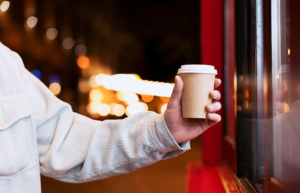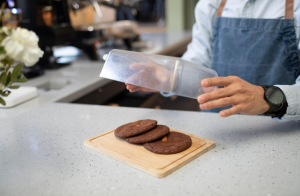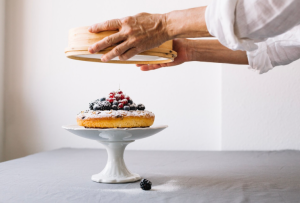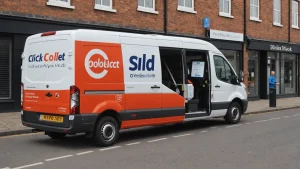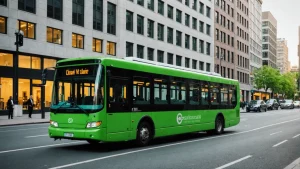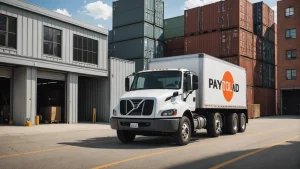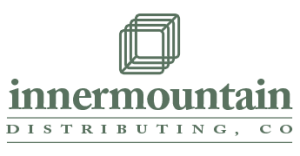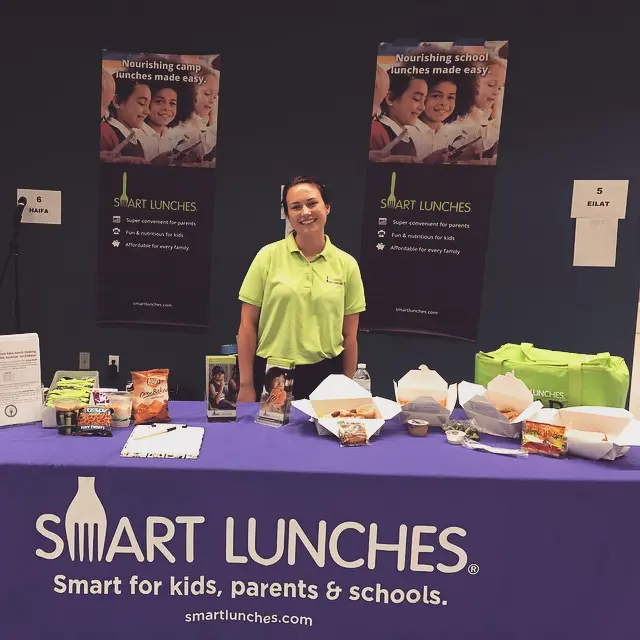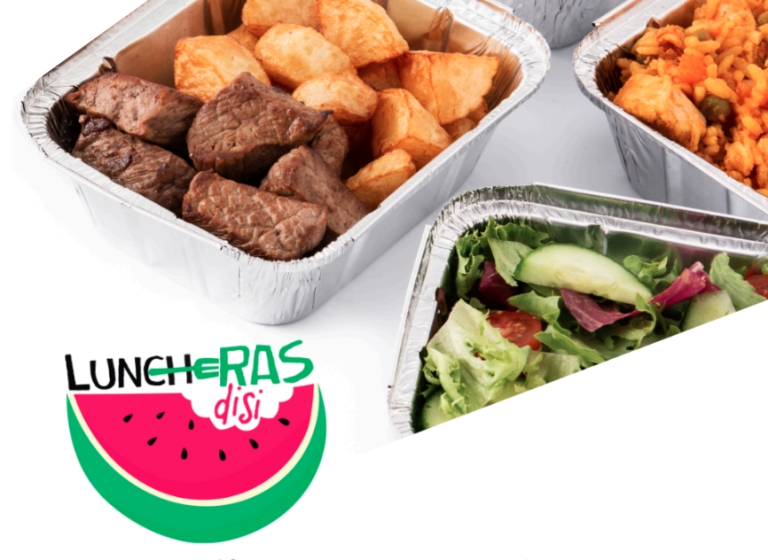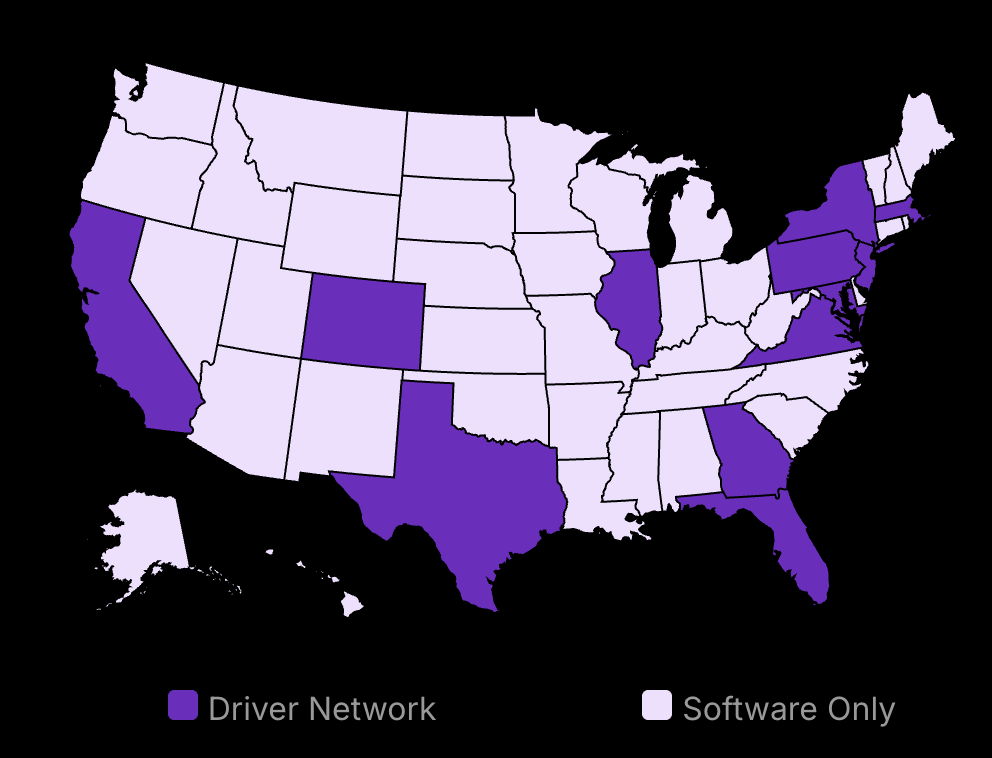Small business owners face a hard truth in 2025: your products alone won’t keep customers coming back.
Small gestures matter more than you think when you aim to delight customers. A customer who feels special knows a few ways to become your most powerful marketing tool.
However, here’s what most local store owners often overlook: customer appreciation isn’t about grand gestures or expensive loyalty programs. It’s about consistent, thoughtful recognition through customer appreciation ideas at make people feel seen.
In 2025, with big retailers and online giants fighting for attention, your ability to create genuine connections to build customer loyalty is your greatest advantage. Yet, most local businesses fail to utilize this effectively to attract repeat customers and also bring in new ones.
What if you could implement simple customer appreciation ideas and strategies that cost little but deliver remarkable results?
This guide shares practical customer appreciation ideas specifically designed for local stores, including organizing a customer appreciation event that could thrive in today’s economy. You’ll learn how to create loyalty programs that customers use, host community events that strengthen your brand, and personalize rewards that turn occasional shoppers into passionate advocates.
The approaches I’ll share have been tested by hundreds of local businesses across different industries. They work because they focus on what customers truly want: recognition, connection, and value, especially from the best customers.

Save 80% of delivery management time
We handle everything:
- Dedicated operations manager
- Real-time tracking dashboard
- Automated customer notifications
- Urgent issue resolution
Step 1: Creative Customer Loyalty Programs
Points and tiers drive repeat business and create emotional connections
Effective programs focus on simplicity, value, and personalization
Strategic implementation increases average purchase value by 20-30%
Design A Point-Based System to Build Customer Loyalty
Points-based rewards programs remain the backbone of customer appreciation ideas in 2025. These systems create a clear path for customers to earn rewards through their purchasing behavior. The psychological reward of watching points accumulate drives continued engagement with your store.
The basic structure is straightforward: customers earn points based on purchase amounts (typically 1 point per dollar spent). Once they reach certain thresholds, they can redeem these points for discounts, free products, or special services. Research from the 2024 Retail Customer Loyalty Report shows that stores with well-designed point systems see 23% higher customer retention rates compared to those without loyalty programs.
Setting Up Your Points Structure
You should start by determining your points-to-value ratio. This calculation should balance customer appeal with business sustainability. Most successful local retailers offer between 3-5% return in value. For example, if a customer spends $100 (earning 100 points), they should be able to redeem those points for a $3-$5 reward.
Next, create a clear redemption menu that offers various options at different point levels. Include both low-threshold rewards (achievable after 1-2 purchases) and aspirational rewards that encourage long-term loyalty. Consider these reward types and creative gift ideas, including offering free samples:
Percentage discounts on future purchases (10%, 15%, 20%)
Fixed-amount coupons ($5, $10, $15 off)
Free products from your inventory
Exclusive services are not available to non-members
Partner rewards from complementary local businesses
Double Points Days and Special Customer Appreciation Day Events
Strategic implementation of double-point days creates urgency and drives sales during specific periods. These customer appreciation day events work particularly well during:
Traditionally slow business days (turning your “Tuesday slump” into “Double Point Tuesday”)
The holiday shopping season, when competition is high
Store anniversaries or milestone celebrations
New product launches or inventory clearance periods
When planning double-point days, communicate clearly with your customers through multiple channels. You can send email notifications at least 48 hours before the customer appreciation day
event, post in-store signage, and share reminders on social media platforms. According to retail analytics firm ShopperTrak, well-promoted double-point days can increase daily foot traffic by 35-45% compared to regular business days.
Technology Implementation In Customer Appreciation Scripts
In 2025, customers expect seamless technology integration with customer loyalty programs. Consider these options based on your budget and technical capabilities:
Digital customer loyalty apps that allow customers to track points via smartphone
POS system integration that automatically calculates and displays points
Email or SMS notifications when customers reach redemption thresholds
QR code systems for quick point checking and redemption
Implement A Tier-Based Membership
Tier-based membership programs create a sense of status and exclusivity that basic point systems cannot match. They transform the customer relationship from transactional to aspirational, encouraging shoppers to reach higher levels for enhanced benefits.
The psychology behind tiered programs is powerful. Customers near a tier threshold will often increase spending to reach the next level, while those who achieve higher tiers typically remain loyal to maintain their status. A 2024 study by loyalty platform Antavo found that customers in top-tier programs spend 40% more annually than non-tiered loyalty members.
Creating meaningful tier levels
You should start with 3-4 clearly defined tiers. Too many levels create confusion, while too few limit the aspirational element. Consider these tier structures:
Bronze, Silver, Gold (classic and easily understood)
Explorer, Enthusiast, Expert (thematic approach for specialty stores)
Local, Regular, VIP (straightforward designation of customer frequency)
For each tier, establish specific requirements and benefits. Requirements typically include:
Annual spending thresholds (e.g., $250, $500, $1000)
Number of purchases per year (e.g., 5, 10, 20 visits)
Combination metrics (e.g., $300 spend OR 8 visits)
Benefits should become progressively more valuable with each tier. Higher tiers should include all lower-tier benefits plus additional exclusive perks.
Exclusive access and special events
The most valued tier benefits often involve exclusivity rather than discounts. Consider these high-impact tier rewards:
Early access to sales (24-48 hours before public access)
Invitation-only events like product previews or after-hours shopping
Meet-and-greets with vendors, artisans, or experts in your field
Special ordering privileges for limited-quantity items
Dedicated staff member or concierge service for top-tier members
Communication and recognition
How you communicate with tiered members significantly impacts program effectiveness. Consider these strategies:
Personalized welcome emails when customers reach a new tier
Visible in-store recognition (staff greeting by name, acknowledgment of tier status)
Anniversary celebrations of tier achievement dates
Clear communication about how close customers are to the next tier
Surprise occasional upgrades for customers near thresholds
The language used in these communications matters tremendously. Messages should express genuine gratitude rather than transactional acknowledgment. Compare:
“Thank you for your purchase, which earned you Silver status.”
versus
“We’re grateful for your continued support of our store. Your Silver status reflects how much we value having you as part of our community.”
The second approach creates an emotional connection and demonstrates authentic appreciation.
When customers feel genuinely valued, they respond with increased loyalty. A well-designed customer appreciation day program combining points and tiers doesn’t just reward transactions—it builds relationships that withstand competitive pressures and economic fluctuations.
Step 2: Effective In-Store Engagement Strategies
Physical connections build lasting customer relationships
Interactive experiences increase repeat visits by 40%
Community-centered strategies boost word-of-mouth marketing
Host Community or Customer Appreciation Events
When local stores host community events, they transform their space from a place of transactions into a gathering spot that builds lasting connections. In 2025, small businesses are finding remarkable success with focused, intimate events for client appreciation, particularly during customer appreciation week, such as a customer appreciation day, that creates emotional bonds with customers. Rather than trying to compete with large retailers on price, independent stores leverage their community presence as their greatest asset.
Research from the Small Business Administration shows that stores hosting regular community events see 27% higher customer retention rates compared to those that don’t. This is because these events satisfy the fundamental human need for connection that even the most sophisticated online shopping experience cannot replicate, ensuring that customers feel appreciated and rewarded for their loyalty. By creating spaces where customers can interact with each other and with staff in a relaxed, non-sales environment, stores build the kind of goodwill that algorithms cannot quantify but that directly impacts the bottom line.
The most successful community events in local retail settings share key characteristics: they’re relevant to the store’s identity, they’re consistent but not predictable, and they offer genuine value to participants. For example, a bookstore might host monthly author readings but vary the genres and formats to keep the experience fresh. A kitchenware store could offer cooking demonstrations that highlight seasonal ingredients, bringing in local chefs to showcase their expertise. These events work because they extend the store’s brand promise while creating moments of shared experience among community members, ultimately turning them into brand advocates.
Planning Seasonal Celebrations that Drive Engagement
The calendar provides natural opportunities for community events that local stores can leverage throughout the year. Holiday-themed gatherings are particularly effective when they offer something unique that customers can’t find at big-box competitors. For instance, a neighborhood toy store might host a “Holiday Wish List Workshop” where children can create their wish lists while parents receive personalized shopping assistance from knowledgeable staff. This not only drives immediate foot traffic but also creates a positive memory associated with the store.
Store anniversaries represent another powerful opportunity for community building. When celebrating these milestones, successful retailers focus less on their achievements and more on thanking the community that has supported them. A hardware store marking 25 years in business might host a “Community Builders” event recognizing local contractors and DIY enthusiasts who have been loyal customers, perhaps featuring demonstrations from local artisans who use their tools. This approach transforms what could be a self-congratulatory occasion into a community celebration that strengthens bonds with customers.
Run In-Store Contests
In-store contests have evolved significantly from the simple “guess how many jellybeans” jar of previous decades. Today’s most effective retail contests blend digital engagement with physical store experiences to create multi-channel customer interactions.
The psychology behind contests is powerful: they tap into fundamental human drives for achievement, recognition, and play. When designed thoughtfully, contests create a state of positive anticipation that customers associate with your store. Research from consumer behavior studies indicates that the dopamine release triggered by the possibility of winning—even when the prize is modest—creates stronger neural connections to the brand than many traditional marketing methods.
Effective contests in local retail settings should be simple to enter, transparent in their rules, and satisfying regardless of outcome. For example, a pet supply store might run a “Pet Portrait Contest” where customers submit photos of their pets, with entries displayed in-store and voting conducted both online and in person. The winners might receive store credit, but all participants get a small discount on their next purchase. This approach ensures that everyone who engages feels rewarded for their participation, while the public display of entries creates conversation and community among customers.
Using Contests For Valuable Customer Feedback
Beyond their immediate engagement value, contests provide an exceptional opportunity to gather detailed customer feedback on products and services. By designing contests that involve product testing or evaluation, stores gain insights directly from their target market. A sporting goods store might run a “Gear Tester Challenge” where selected customers try new equipment and provide detailed reviews, with the most helpful reviewers winning prizes. This approach not only generates excitement but also produces authentic testimonials and practical feedback that can inform purchasing and marketing decisions.
“Today’s customers expect more than just transactions—they want tailored experiences that reflect their unique preferences and needs, especially in retail,” notes a customer engagement expert from Cisco Spaces. This insight highlights why feedback-focused contests with a personal touch are particularly valuable: they demonstrate that the store values customer opinions while simultaneously collecting data that helps tailor future offerings to customer preferences.
Create Interactive Product Demonstrations
Interactive demonstrations transform passive browsing into active engagement, allowing customers to experience products in ways that online shopping cannot match, making this a fun idea for the store. In 2025, successful local retailers are recognizing that demonstrations must go beyond basic product features to tell compelling stories that connect with customers’ aspirations and identity.
The effectiveness of interactive demonstrations stems from their appeal to multiple senses simultaneously. When customers can touch, smell, taste, or hear a product in action, they form stronger memory associations and emotional connections to it. Neuroscience research indicates that multi-sensory product experiences activate more regions of the brain than visual-only encounters, leading to higher recall and stronger purchase intent.
For local stores, the key to successful demonstrations is making them relevant to customers’ actual lives rather than presenting idealized scenarios. A kitchen supply store might offer “Weeknight Dinner Solutions” demonstrations that show how certain tools can realistically save time for busy families, rather than showcasing elaborate techniques few will attempt. A hardware store could run “First-Time Homeowner Workshops” that demonstrate basic repair skills using tools from their inventory, building both competence and confidence in their customer base.
Training Staff For Compelling Demonstrations
The human element makes or breaks product demonstrations. Staff members conducting demonstrations need specific training that goes beyond product knowledge to include storytelling techniques, audience engagement, and adaptive presentation skills. The most effective demonstrators share certain qualities: they’re authentic in their enthusiasm, they acknowledge product limitations honestly, and they adjust their approach based on customer reactions.
Training programs should focus on helping staff understand the difference between features and benefits, with emphasis on connecting product attributes to customer outcomes. A cosmetics store employee demonstrating a new skincare line shouldn’t just list ingredients but should explain how those ingredients address specific concerns, invite questions throughout, and personalize recommendations based on individual customer needs.
Implement Digital Touchpoints In Physical Spaces
The integration of digital technology into physical retail spaces has moved far beyond simple point-of-sale systems. Today’s most engaging local stores create seamless blends of digital and physical experiences that enhance customer interactions without overshadowing the human element that makes small businesses special.
In-store retail media spending is projected to exceed $1 billion by 2028, reflecting this shift toward leveraging digital engagement tools within physical spaces while still providing exceptional customer service. However, local retailers are finding success not by mimicking the high-tech approaches of national chains, but by implementing targeted digital touchpoints that solve specific customer pain points or enhance particular aspects of the shopping experience.
Interactive kiosks that allow customers to check inventory, learn about product origins, or access extended product lines work best when they complement rather than replace staff interactions. For example, a small bookstore might install a touchscreen that helps customers find recommendations based on their reading history, but position it where staff can notice customer interactions and offer personal insights to supplement the digital suggestions.
Creating Shareable Moments Through Technology
Social media remains a powerful driver of retail traffic, and smart local retailers are creating digitally enhanced in-store experiences specifically designed to be shared online. Interactive photo opportunities, augmented reality features, or unique digital-physical hybrid experiences can turn customers into content creators who market the store through their networks.
Develop Surprise-and-Delight Moments
Unexpected positive experiences create disproportionately strong emotional responses and memory formation. In retail settings, these “surprise and delight” moments can transform ordinary transactions into memorable experiences that customers eagerly share with others. More than one-third of retail executives see enhancing the in-store experience as a top growth opportunity, which aligns with strategies like creating these unexpected positive moments to deepen customer interaction and loyalty.
The psychology behind surprise and delight is well-established: unexpected positive events trigger stronger dopamine responses than anticipated rewards of equal value. This neurological reaction creates stronger memory encoding and more positive brand associations. For local retailers, this means that small, unexpected gestures can have more impact than larger, advertised promotions.
Effective surprise and delight tactics in local retail settings should feel genuine rather than calculated. A coffee shop might occasionally upgrade a regular customer’s order for free with a handwritten note of appreciation. A bookstore could slip bookmark “golden tickets” into random purchases, good for discounts on future visits. A garden center might offer spontaneous mini-workshops when weather conditions are perfect for specific planting activities, texting regular customers with an invitation to drop by.
Training Staff to Identify Opportune Moments
The most authentic surprise and delight experiences often come from empowered employees who can recognize and act on opportunities to exceed customer expectations. This requires not just training but a culture that values and rewards employee initiative in creating positive customer experiences.
Staff should be trained to identify specific customer situations that warrant special attention: first-time visitors, customers celebrating milestones, those who appear to be having a difficult day, or long-time loyal customers who deserve recognition. Employees should have clear guidelines about what they’re authorized to offer without manager approval, whether that’s a small gift, a discount on a future purchase, or simply extra attention and assistance.
Step 3: Personalized Customer Rewards
Create custom rewards based on specific purchase patterns
Build emotional connections through personalized interactions
Increase loyalty by recognizing individual customer preferences
Utilize Purchase History For Tailored Rewards
Purchase history is a gold mine for creating personalized rewards that customers want. According to research shared at Experience ’24, most loyal customers say personalized experiences drive their brand choices in at least half of their shopping situations. Even more striking, 61% are willing to spend more with companies that customize their service to fit specific needs.
The key to effective personalization for existing customers is data collection and analysis. Start by setting up a basic system to track what each customer buys. This doesn’t need to be complex – a simple point-of-sale system with customer profiles works well for small businesses. The goal is to identify patterns: What products do they buy regularly? What price points do they prefer? What brands do they gravitate toward?
Creating Meaningful Offers Based On Purchase Data
Once you have collected enough purchase data (typically 3-6 months’ worth), you can begin crafting rewards that feel custom-made for each customer. For frequent buyers of specific products, consider these approaches:
Offer a discount on their 5th or 10th purchase of a specific product category
Create bundles that include their favorite items plus complementary products
Send early access to new products in categories they frequently purchase
Develop a “favorites program” with special pricing on their most-bought items
Personalized Thank-You Gestures
Thank-you notes and small gifts based on purchase history create powerful emotional connections. These gestures, such as a handwritten note, allow you to express appreciation and show customers you see them as individuals, not just transactions.
For handwritten thank-you notes:
Reference specific purchases in your message
Keep the tone warm but professional
Express genuine appreciation for their business
Sign with your name and position
Add a small discount code or gift card when appropriate
Cultivate Strong Customer Relationships
Building strong customer relationships goes beyond transactions to create emotional connections that can lead to new business opportunities. The foundation of these relationships is recognizing customers as individuals with unique preferences and needs, ultimately contributing to a loyal customer base.
The power of name recognition
When staff members remember and use a customer’s name, it creates an instant personal connection. This simple practice significantly enhances the shopping experience by making customers feel valued.
To help staff remember customer names:
Create a quick-reference system with regular customers’ names and key preferences
Practice name memorization techniques during staff meetings
Implement a subtle signaling system for team members to share customer names
Use CRM software that displays customer names during checkout
Train staff to properly pronounce unique or uncommon names
Providing Personalized Recommendations
Personalized product recommendations create exceptional customer experiences that drive loyalty. These recommendations should be based on purchase history, stated preferences, and personal interactions.
For effective personalized recommendations:
Review customer purchase history before making suggestions
Ask open-ended questions about preferences and intended use
Note when customers decline recommendations to refine future suggestions
Follow up on previous recommendations to build continuity
Document successful recommendations for each customer
You should train staff to make recommendations by connecting products to the customer’s specific needs rather than generic sales pitches. For example: “Since you enjoyed that historical fiction book about World War II, you might like this new release by Anthony Doerr. It has similar themes but from a different perspective.”
The best recommendations often come with personal endorsements: “I tried this cooking oil you usually buy in the garlic-infused version last week, and it was amazing with pasta. Would you like to try it?”
Professional Ways To Thank Customers
Expressing gratitude to customers during an appreciation event strengthens relationships and encourages repeat business. Professional thank-you messages should be sincere, specific, and appropriately timed.
For verbal thank-yous, train staff to:
Make eye contact and use the customer’s name
Reference something specific about their purchase or visit
Express how their business helps your store
Invite them back with a specific reason
Example: “Thank you for shopping with us today, Mr. Rodriguez. I hope your new hiking boots work well for your trip next month. Customers like you help keep our local outdoor shop thriving. We’ll be getting our spring gear in next month, which I think you’ll like.”
For written thank-yous:
Send within 48 hours of a significant purchase
Personalize the message with specific references
Keep the tone professional but warm
Include your contact information for questions
Sign with your name and position
Digital thank-yous can work well too, especially when they include a personalized element like a video message for high-value customers or an exclusive digital offer based on their interests.
The most effective thank-you messages make customers feel seen and valued, which can be supported by using effective customer appreciation scripts. While reinforcing the relationship between them and your business through excellent customer service. As one small business owner put it: “A genuine thank-you isn’t just good manners – it’s good business.”
Customer Appreciation Day Ideas With Beta Programs
As 2025 continues, strong customer appreciation strategies remain key for local stores looking to thrive. The most effective approaches combine technology with the human touch to boost customer loyalty—points systems that track preferences, community events that build relationships, and personalized rewards that show customers you truly know them.
Success comes when you keep your loyalty programs simple, which can significantly boost sales, engage your staff, and keep your customer feedback loop active. The small details—remembering names, sending personal thank-you notes, hosting meaningful events—often make the biggest difference in how customers feel about your business.
Customer appreciation isn’t just a strategy; it’s a mindset that puts people first. When customers feel valued, they don’t just return—they bring friends and family, becoming your most effective marketing channel.
You should start with one idea from this guide. Implement it well, measure results, and build from there. Your connection with customers is your greatest competitive advantage as a local store. In a world of big-box retailers and online giants, it’s these meaningful relationships that will keep your doors open and your business growing throughout 2025 and beyond.











